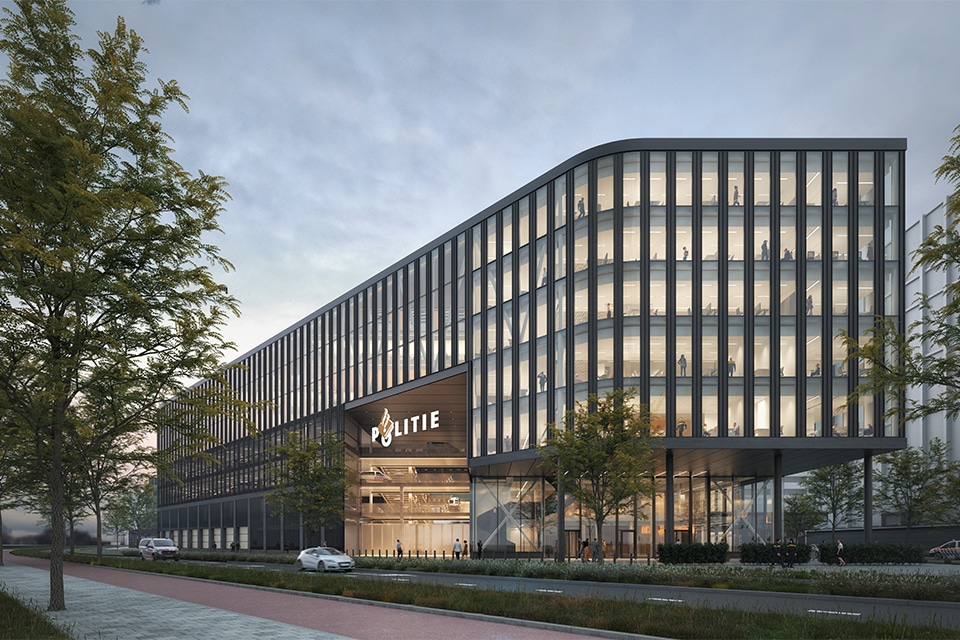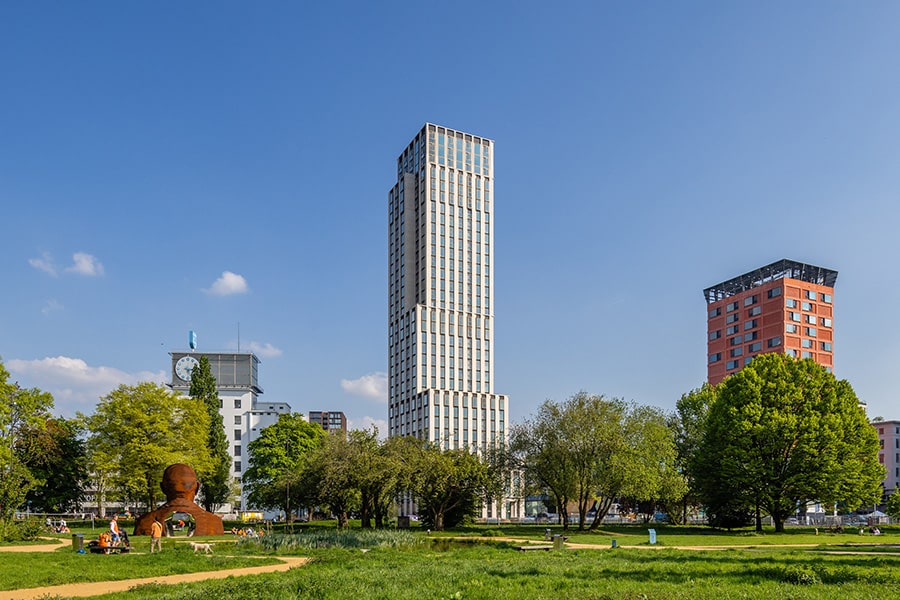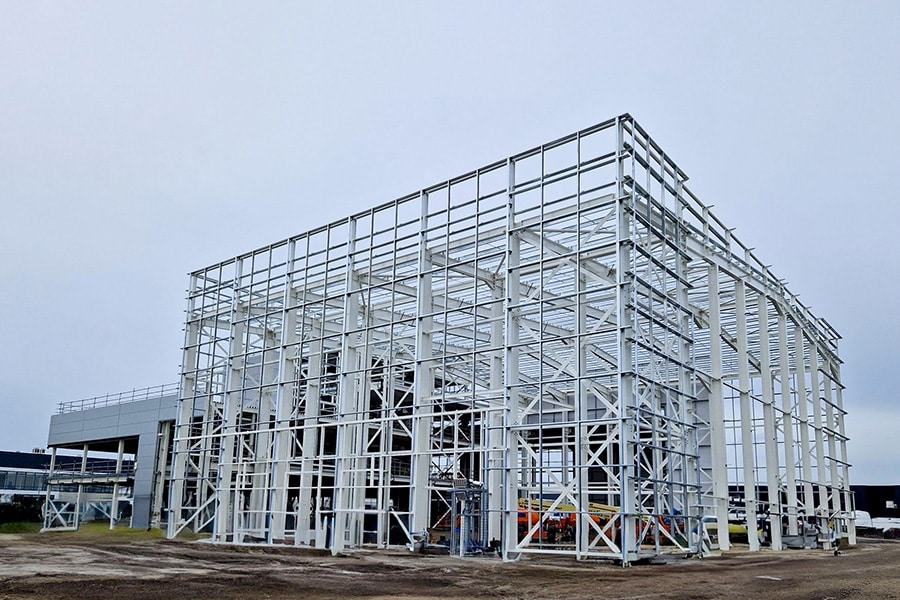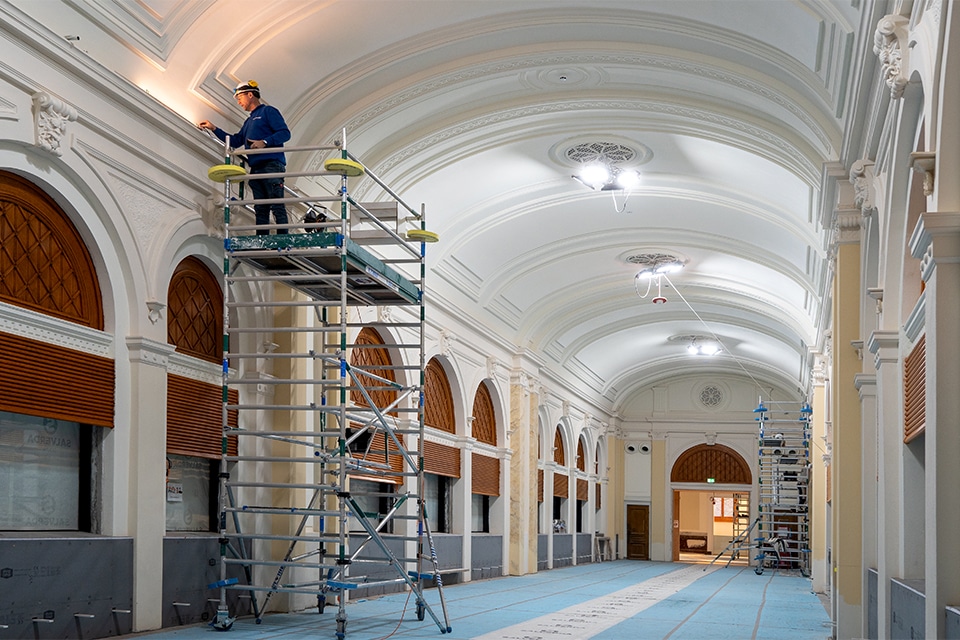
Installations as artwork in monumental ARTIS Aquarium
In Amsterdam, the impressive restoration and preservation of the iconic ARTIS Aquarium is nearing completion. The new design provides even more connection to the outside world and makes the monumental architecture more visible. The same goes for the installation techniques, which are being incorporated into the spaces like a work of art.
ARTIS is the oldest zoo in the Netherlands. The park has several monumental buildings, most of which date back to the 19th century. The ARTIS Aquarium is another such monumental building and has been displaying one of the most enchanting parts of nature for decades: the underwater world. Some 420,000 liters of fresh and 880,000 liters of salt water flow through the aquarium, home to tropical fish such as the red-bellied piranha and rainbow fish, as well as seahorses, endangered coral species and sharks. Combined with a constant humidity of 65 to 75%, an ideal atmosphere is created for the aquarium inhabitants. For the building itself, however, conditions are less suitable. As a result of rising damp and salt crystallizations, the main load-bearing structure and an interior façade of the 1881 national monument have deteriorated significantly. In order to preserve the building for the future, a major restoration and preservation project was therefore started in February 2021.
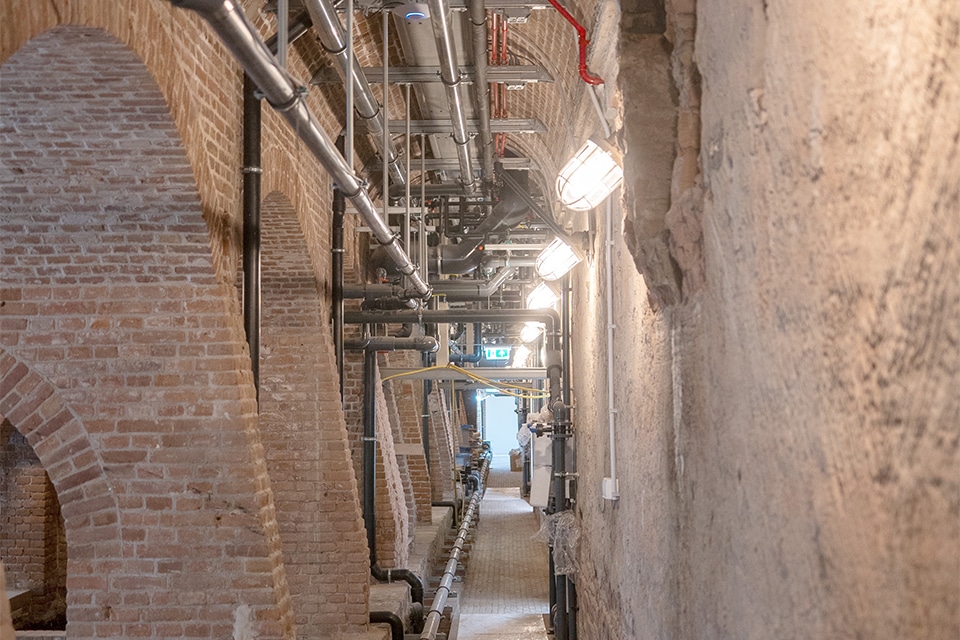
Electrical installations
The plan includes restoration of the unique Lloyd filter system in the basins and renewal and restoration of the entire interior. In the new situation, the ARTIS Aquarium will be accessible to everyone and will have more light and a logical walking route. A number of aquariums will also be enlarged. The integral insulation of the roof and the installation of solar panels will provide a major sustainability improvement. In addition, the mechanical and electrical installations will be modernized, with SDR Elektrotechniek taking care of the electrical part in the broadest sense on behalf of Salverda Bouw. From light and power installations to lighting controls and 'Safety & Security' systems such as fire alarm and evacuation systems, access control systems and other security installations, says Hussein Fahimi, Director of Projects at SDR Elektrotechniek. "Moreover, we have various interfaces with the control installations. For example, in the area of sustainability and energy-neutral techniques. We made provisions for the control cabinets and heat pumps. We also made connections to ARTIS' control room. Because the ARTIS Aquarium is a National Monument, all work is closely coordinated with the Monumentenzorg (National Trust)."
At home in monumental projects
Salverda Bouw, Breman (W-installations) and SDR Elektrotechniek are no strangers to each other. In the past, the construction team partners have already signed off on the renovation and preservation of various monumental inner-city projects, such as the Anne Frank House, Hotel Pulitzer, the Heineken Experience, the Art Hotel and Victoria in Amsterdam. "For the renovation and preservation of the ARTIS Aquarium, we conducted a feasibility study prior to the plan preparation," says Fahimi. "For example, to gain insight into the building, the installations and the possible risks. Could we meet the central demand and need? Then we started the design and engineering over two years ago."
Elaboration and coordination in 3D/BIM
The design phase included a focus on recycling and reuse. The goal was to retain as many installation parts as possible, says Fahimi. "However, due to the salty climate, this only proved possible for certain ornaments such as the fixtures and some image-defining building components." The challenge was particularly in the architectural part of the ARTIS Aquarium, he says. "And particularly in the section with the basins and filter system and in the technical areas above, where we had to fit our installations into limited monumental spaces. According to the architect's wishes, many installations remain in plain sight, which places high demands on the assembly. Those who will soon walk through the building will also walk past and under our technology, which has been fitted into the rooms like modern art."
To streamline construction work and installation techniques properly and to enable prefabrication, the large installation parts and infrastructures in particular were worked out and coordinated in 3D/BIM.
Alternative materials
Because of the salty indoor climate, for example, the cable ducts are made of plastic instead of metal, says Fahimi. "The fire alarm system is also implemented as a wireless aspiration detection system, which prevents corrosion and ensures a long life and safe operation of the systems."
"As an organization, we are very proud of our contribution to this beautiful project," concludes Fahimi. "I would like to compliment my project team under the supervision of Erik Poelman (Project Manager), Bram Wolf (Engineering/WVB), Tom Bloos (Executor) and all other colleagues and wish them every success with the completion. The iconic ARTIS Aquarium will be a wonderful gem on our long list of reference projects."
